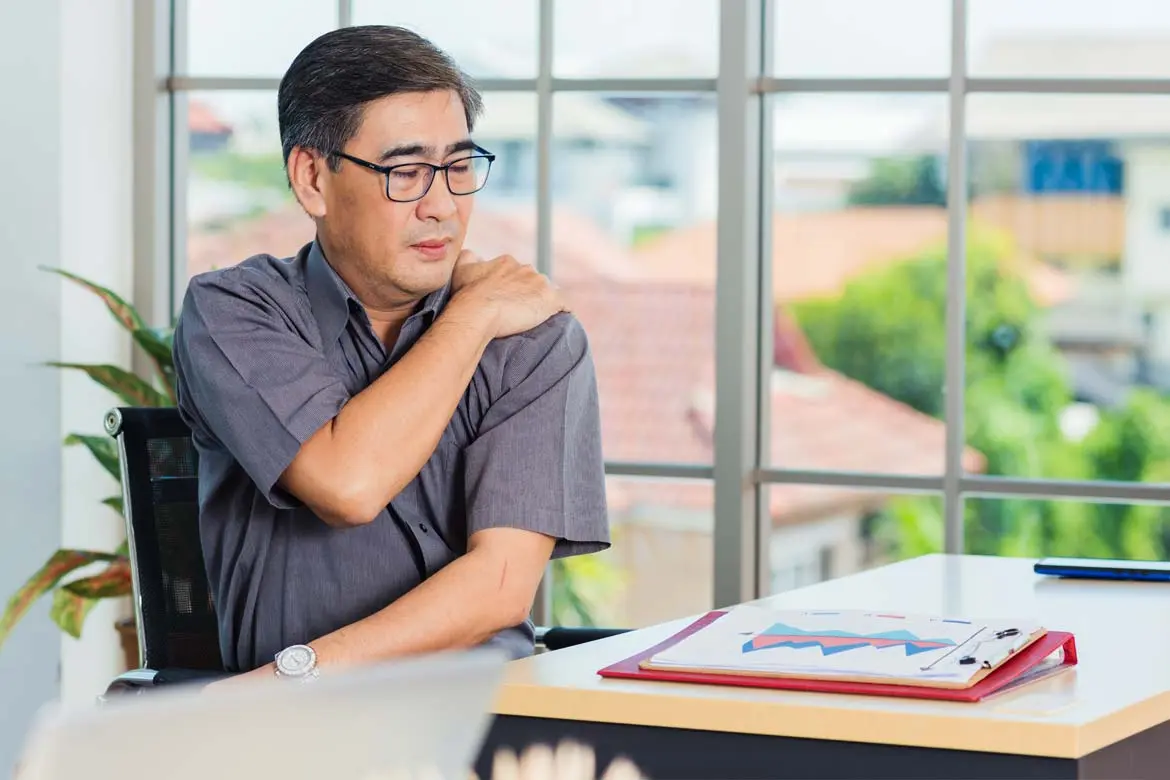Dr Wee Teck Huat Andy
Orthopaedic Surgeon


Source: Shutterstock
Orthopaedic Surgeon
Rotator cuff tear, a type of shoulder injury, is a painful and aggravating condition. Performing daily activities such as dressing up or combing your hair can be difficult with a torn rotator cuff. If left untreated, the condition often worsens, so much so that surgery may be the only treatment option. With advances in technology, minimally invasive keyhole surgery (arthroscopy) has been developed to treat rotator cuff tears.
Read on to learn more about rotator cuff tear and the various surgical options available for its treatment.
The rotator cuff is a group of muscles and tendons (tissue that connects muscle to bone) that holds the shoulder joint in place and allows you to move your arm and shoulder.
A rotator cuff tear can occur when one or more of the rotator cuff tendons are damaged as a result of trauma or injury. Due to the tear, the tendon no longer fully attaches to the head of the upper arm bone (humerus). In a partial tear, the tendon is damaged but not entirely detached from the bone. In a full-thickness tear or a complete tear, the tendon is completely separated from the bone.
Rotator cuff tears can be caused by a single traumatic episode, or gradual wear and tear of the tendon over time. Injury can occur when you lift heavy objects or fall on your arm. Chronic rotator cuff tears, on the other hand, can be caused by repetitive stress, poor blood flow and bone spur formation. If you are above the age of 40, you are at a greater risk of developing rotator cuff tears. People who engage in overhead sports like badminton and baseball, as well as those whose jobs involve repetitive usage of the upper limbs, like painters and carpenters, also have a higher chance of developing rotator cuff tears.
The common symptoms of rotator cuff tears are:
As rotator cuff disease is progressive, prompt treatment is necessary to prevent the condition from worsening.
Non-surgical treatment approaches for treating rotator cuff tears include rest, activity modification, physiotherapy, pain relief medicines, and steroid injections. These treatment options typically work for partial tears and tears that result in minimal symptoms.
Your doctor may recommend surgery if you have a full-thickness tear, especially if there is no improvement in your condition with the traditional approaches or if your symptoms have been present for more than 6 months. Surgery is also recommended if you experience extreme weakness and loss of shoulder function, or if you had significant traumatic injury that resulted in a large tear.
The main surgical options for repairing rotator cuff tears are: traditional open or mini-open repair as well as arthroscopic repair.
Traditional open repair may be required if your tear is large and longstanding. This is a more invasive procedure and utilises a 5 – 7cm open incision to gain access to the shoulder.
Conversely, for less severe tears, arthroscopic repair can be performed through small keyhole incisions using advanced technology and surgical instruments.
In arthroscopy, the surgery is guided by an arthroscope (a long tube affixed with a camera). The arthroscope is inserted through a small incision to view the damaged tissue. Additional keyhole incisions are then made to allow arthroscopic instruments to carry out the repair in a minimally invasive fashion under direct vision with the arthroscope.
Arthroscopic cuff repair is usually performed as an outpatient day surgery procedure. Being minimally invasive, arthroscopic rotator cuff repair results in less soft tissue trauma and hence faster recovery and less post-operative pain as compared to traditional open repairs.
One of the challenges of arthroscopic cuff repair is getting the tendon to heal properly after surgery. The REGENETEN implant was therefore more recently developed as a solution to help manage that. This is essentially a novel collagen-based bioinductive implant that can be inserted via a minimally invasive approach to augment rotator cuff repairs. The REGENETEN bioinductive implant induces tissue proliferation and collagen remodelling over the repaired/torn rotator cuff. It gradually absorbs within 6 months and leaves a layer of new, tendon-like tissue to support the existing damaged and repaired tendon.
After surgery, you will be prescribed medicine to deal with the pain. You will also undergo rehabilitation to get back to your daily activities. Your doctor will also suggest a physical therapy programme that may help you regain shoulder strength and motion.
Your doctor can decide if you are a candidate for minimally invasive surgery after assessing your injury and other lifestyle conditions. They may also order imaging tests to evaluate your condition.
It is good to see a doctor if you are experiencing chronic shoulder and arm pain. Early treatment can prevent the worsening of your symptoms and help you get back to your normal activities quickly.
If you are suffering from shoulder joint problems, consult our orthopaedic surgeons, who will be able to advise you on the most suitable course of treatment.